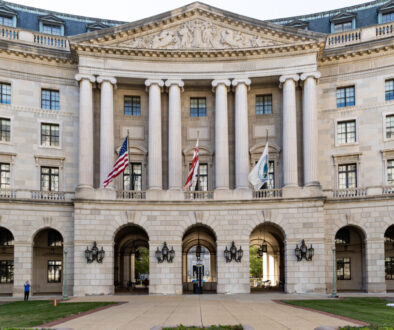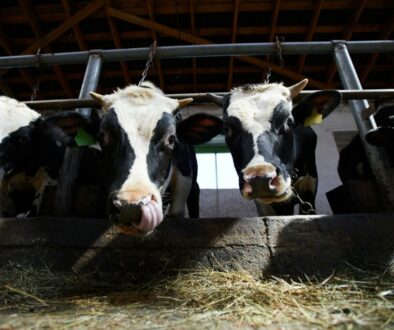California bill to ban food dyes in schools may have nationwide impact
A bill that would ban six food dyes linked to childhood learning problems from meals served at California public schools is close to passage and could bolster efforts to make foods safer across the US, according to proponents.
The measure has garnered strong bipartisan backing and is likely to reach the governor’s desk by the end of August, California Assemblymember Jesse Gabriel said at a press conference on Tuesday. Gabriel introduced the California School Food Safety Act (AB 2316) in March.
AB 2316 advanced through the Senate Health Committee last month and passed the California Senate Education Committee in June with a unanimous vote. The Senate Appropriations Committee is expected to decide next week whether to send it to the Senate Floor, according to Gabriel.
The dyes in question are used to give some beverages, desserts and cereals vibrant colors but don’t impact how the products taste. They account for two-thirds of the certified color additives the US Food and Drug Administration (FDA) has approved for use in food.
Due to the nature of the supply chain, manufacturers are unlikely to make one version of a food product for California and a different version for other states, so the measure could have a nationwide impact, Gabriel said.
The bill is not a ban on any foods, he said, because there are readily available substitutes for each additive and the same products are available in Europe without the harmful chemicals.
Linked to ADHD symptoms
Synthetic food dyes have been liked to symptoms of attention-deficit/hyperactivity disorder (ADHD) in children, according to a 2021 report by the California Environmental Protection Agency, which noted that diagnoses of the disorder in American children have risen by over 4% in the last 20 years.
“Overall, our review of human studies suggests that synthetic food dyes are associated with adverse neurobehavioral effects, such as inattentiveness, hyperactivity and restlessness in sensitive children,” the authors wrote.
Safe federal consumption levels for the chemicals were established decades ago and fail to account for newer research, according to the report.
The US Food and Drug Administration (FDA) maintains that color additives “are safe when used properly.”
When asked to comment on the California legislative action, the agency reiterated its position that while “certain children” may be “sensitive” to consuming foods with color additives, “most children have no adverse effects.”
“The FDA will continue to assess the emerging science and ensure the safety of approved color additives,” the agency said in a statement provided to The New Lede.
The proposed legislation comes on the heels of the California Food Safety Act (AB418), the so-called “Skittles bill” signed into law last year, which will ban foods containing toxic brominated vegetable oil, Red Dye No. 3 and other specified substances beginning in 2027.
Other states across the US have moved to introduce similar legislation, including Missouri, Washington, New York and Illinois. Last month, the FDA announced it will no longer allow brominated vegetable oil in food products.
Supplies cited as concern
Currently, AB 2316 would ban the use in school foods of Red Dye No. 40, Yellow Dye No. 5, Yellow Dye No.6, Blue Dye No.1, Blue Dye No.2 and Green Dye No. 3.
Green Dye No.3 has never been approved for foods in Europe, and while Blue Dye No.1 and Blue Dye No.2 can still be found in some food products, they are “definitely much less common than in the US” due to rules restricting their use, said Gianfranco Cesareo, a law fellow at the Environmental Working Group, which co-sponsored the bill with the nonprofit Consumer Reports. Since 2010, the European Union has required most foods with artificial dyes to be given warning labels that state they “may have an adverse effect on activity and attention in children.”
An earlier version of the bill included titanium dioxide, which is used to whiten dairy products including some milks and shredded cheeses, but the chemical was ultimately dropped from the proposed legislation to achieve greater political consensus, said Gabriel.
Titanium dioxide was also originally listed on the “Skittles bill” but absent from the final legislation. The additive was banned in Europe in 2022 after the European Food Safety Authority concluded that it can build up in the body, breaking DNA and damaging chromosomes.
The FDA is currently reviewing a petition to revoke the color additive listing for use of titanium dioxide in food, which was filed by health and environmental groups in April 2023.
In a letter sent in in March to Al Muratsuchi, Chair of the California Assembly Committee on Education, industry groups including the National Confectioners Association and the American Bakers Association, warned that the bill would increase costs for schools.
“Food manufacturers would need to reformulate many of their products to meet the requirements of this bill,” the groups wrote. Some suppliers would choose not to bear the burden and no longer supply our schools. This would reduce the number of suppliers and increase costs for those that chose to supply California, resulting in decreased competition and increased costs for nutrition programs, while also diminishing options for students.”
But proponents of the bill don’t think it poses a threat to the industry. Only 2%-3% of school lunch items would be affected, according to Cesareo.
“This is about our kids,” Tony Thurmond, the California State Superintendent of Public Instruction and a sponsor of AB 2316, said at the press event. “We have the opportunity to help keep young people healthy, and we know that that is critical to their academic success and to their social development.”
(Featured image via Unsplash+ in collaboration with Maryam Sicard.)





August 18, 2024 @ 2:10 pm
Protect Children NOT Company Profits!
Our children are Precious!
August 18, 2024 @ 2:09 pm
Protect the People NOT Company Profits!
Our children must be PROTECTED from hazardous dyes!